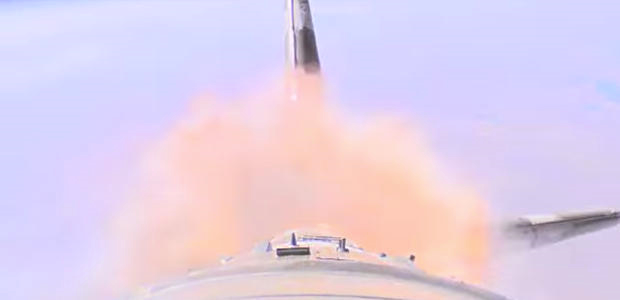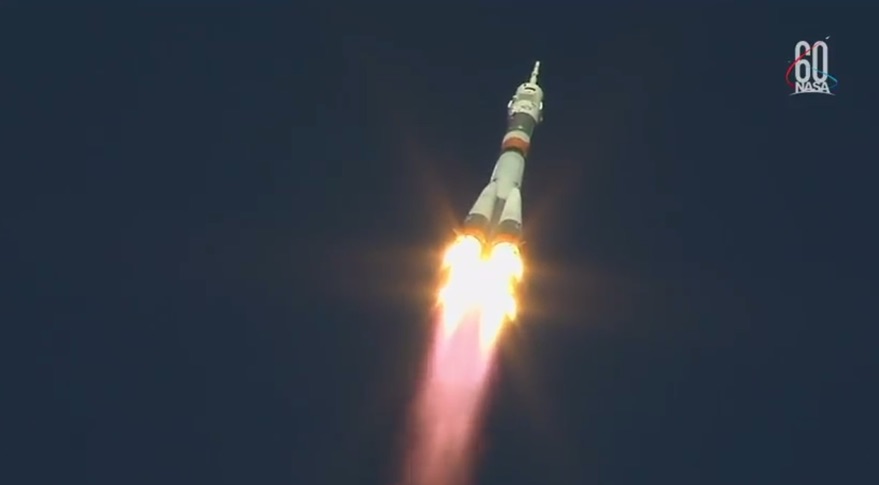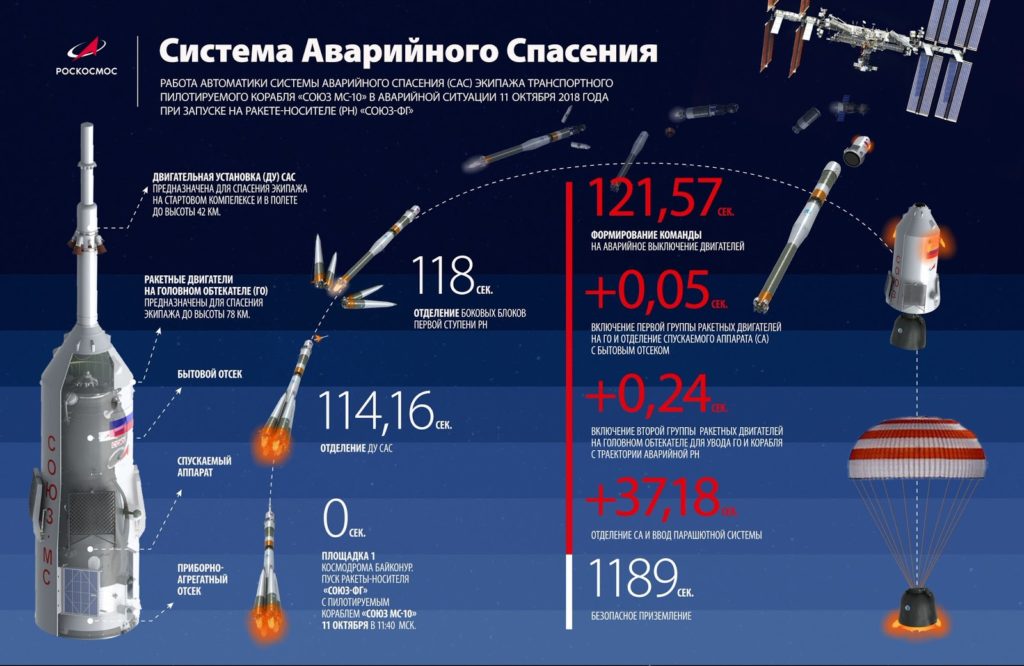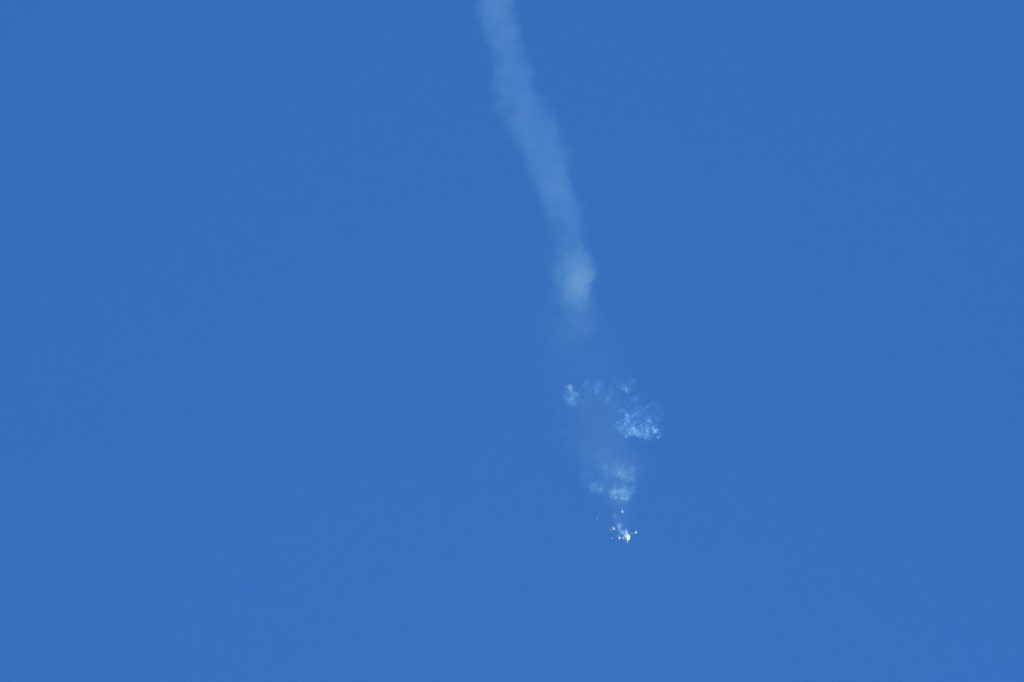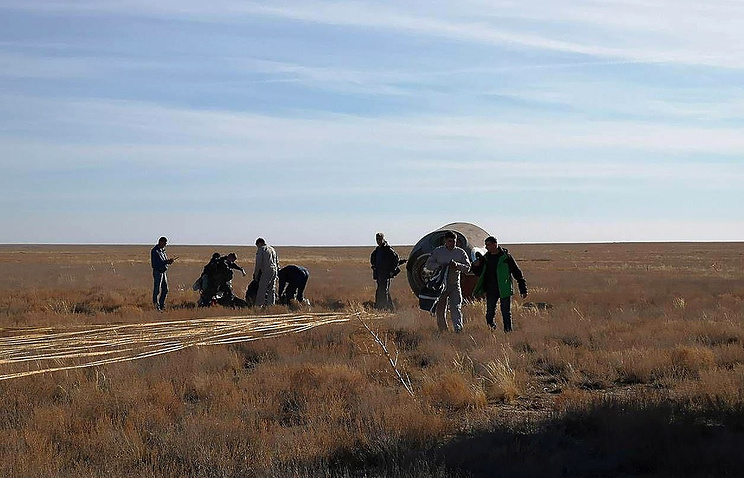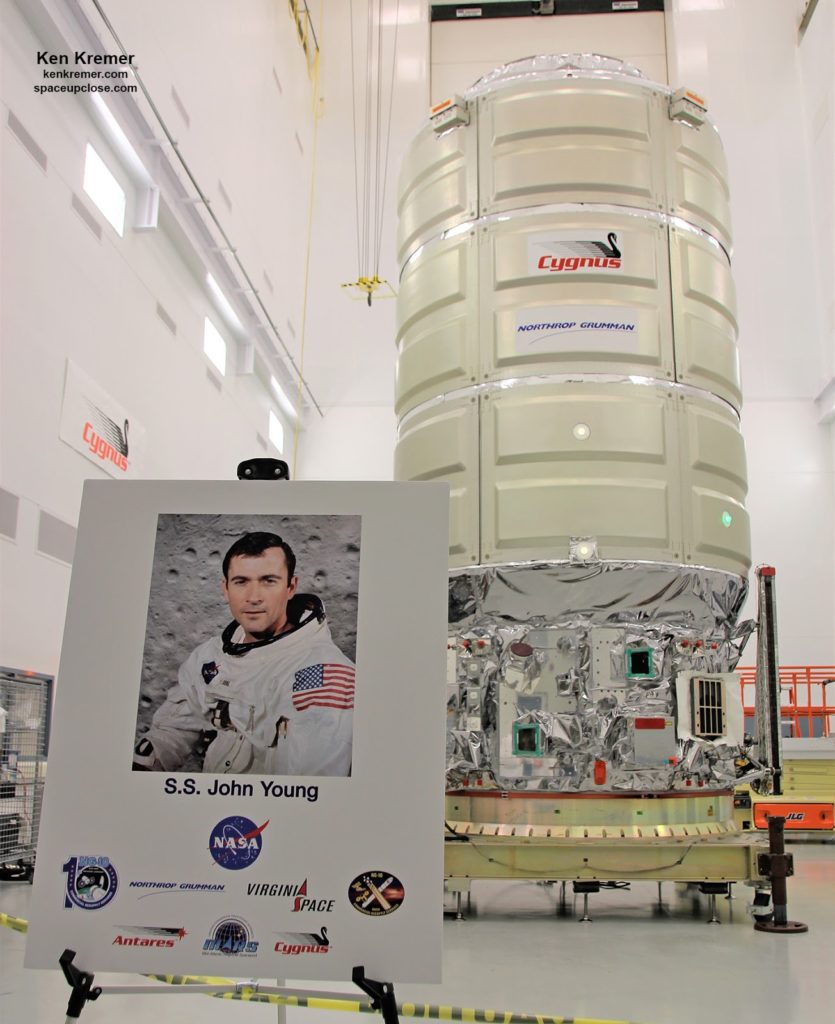MS-10 launch on Oct. 11, 2018 showing
the moment of separation and its destructive aftermath of
booster collision–
taken from a rear facing camera on the side of the Soyuz FG booster. The two person
Russian-American crew survived unharmed. Credit: Roscosmos
CAPE CANAVERAL,
FL – Russian investigators have determined that the ultimate cause of the harrowing emergency abort of the failed Soyuz crew launch with two crewmembers strapped
inside on Oct. 11 can be traced to a defective “deformed sensor” in one of the four strap-on
boosters jettisoned from the core booster approximately 2 minutes after blastoff
of the Soyuz FG rocket from the Baikonur Cosmodrome in Kazakhstan, a Russian
State Committee announced Nov. 1.
The sensor failure
was pinned on “deformation” damage to the sensor somehow caused during final
assembly of the Soyuz booster – that went undetected. Exactly how the damage
occurred was not disclosed by investigators.
The mishap during the Soyuz-FG LV/ Soyuz MS-10
spaceship launch on Oct 11 was traced to an “abnormal separation” of one of the strap-on boosters,”
Oleg Skorobogatov, deputy
director of Russia’s Central Research Institute of Machine
Building (TsNIIMASH) told reporters in Moscow, Thursday, Nov. 1.
were announced during the Nov. 1 media briefing following a thorough investigation
carried out by a Russian State Commission led by Oleg Skorobogatov – that was formed immediately after the accident
to determine the cause and corrective actions so that Soyuz crewed launches to the International Space Station (ISS) could be resumed as soon as possible.
“The launch ended
up with a launcher failure caused by abnormal separation
of one of the strap-on boosters (Block D) that hit with its nose
the core stage (Block A) in the fuel tank area,” said Skorobogatov.
“It resulted
in its decompression and, as consequence, the space rocket lost its
attitude control.”
“This was the cause of
the off-nominal separation.”
The Russian State
Committee released a dramatic video showing the moment
of separation and its destructive aftermath of
booster collision– taken from a rear facing camera on the side of the Soyuz FG booster. See the video above.
crew comprising NASA astronaut Nick Hague and Russian cosmonaut Alexey Ovchinin
survived unharmed and safely landed 34
minutes after liftoff.
The separation
failure resulted in a collision of one of the first stage strap boosters with
the second stage which then triggered a harrowing emergency separation of the
Soyuz MS-10 crew capsule from the Soyuz FG carrier rocket.
The second stage
apparently disintegrated shortly after the anomaly occurred about 119 seconds after liftoff and about a second after first
stage separation from the strap on boosters.
“The abnormal separation was caused
by the non-opening of the lid of the nozzle intended
to separate aside Block D oxidizer tank due to the deformation
of the separation sensor pin (bended by 6˚45‘),” the investigators
explained.
“It was
damaged during the assembling of the strap-on boosters with the core stage
(the Packet) at the Baikonur Cosmodrome. The LV failure cause
is of the operational nature and spreads to the stock
of already assembled packets of the Soyuz rocket.”
As a result of the conclusions
of the committee all Soyuz booster are being thoroughly inspected to search for
any defects and confirm they are ready, suitable and qualified to resume future
Soyuz rocket launches in November.
“To ensure the
implementation of the Launch Manifest for the missions under the Federal
Space Program and Russia’s international cooperation programs, Roscosmos has
arranged a development of preventive measures to avoid any such
contingences in the future and taking of urgent actions
to resume Soyuz launches in November 2018.”
Russian Progress MS-10 resupply ship slated for Nov. 16 was “approved by the
State Committee.”
committee also release a detailed graphic of the events – see below in Russian.
Emergency Crew Rescue System of Soyuz MS-10 spaceship functioned properly.
The crew was acting as required by the on-board instructions and
those given by the Mission Control Center.”
first stage which are attached to the second stage. Three of the strap-ons clearly
separated – as seen in photos taken at the time by NASA photographer Bill
Ingalls and others. The fourth was not visible in Ingalls’s photo released by
NASA and included herein.
abort system of the extremely reliable Soyuz booster then kicked in exactly as
it was designed to in a split second – and saved the lives of Soyuz MS-10 crew launch comprising NASA astronaut
Nick Hague and Russian cosmonaut Alexey Ovchinin who planned to spend 6 months
aboard the International Space Station as members of the Expedition 57 crew.
This demonstrated
the robustness of the Soyuz rocket abort preparations and planning.
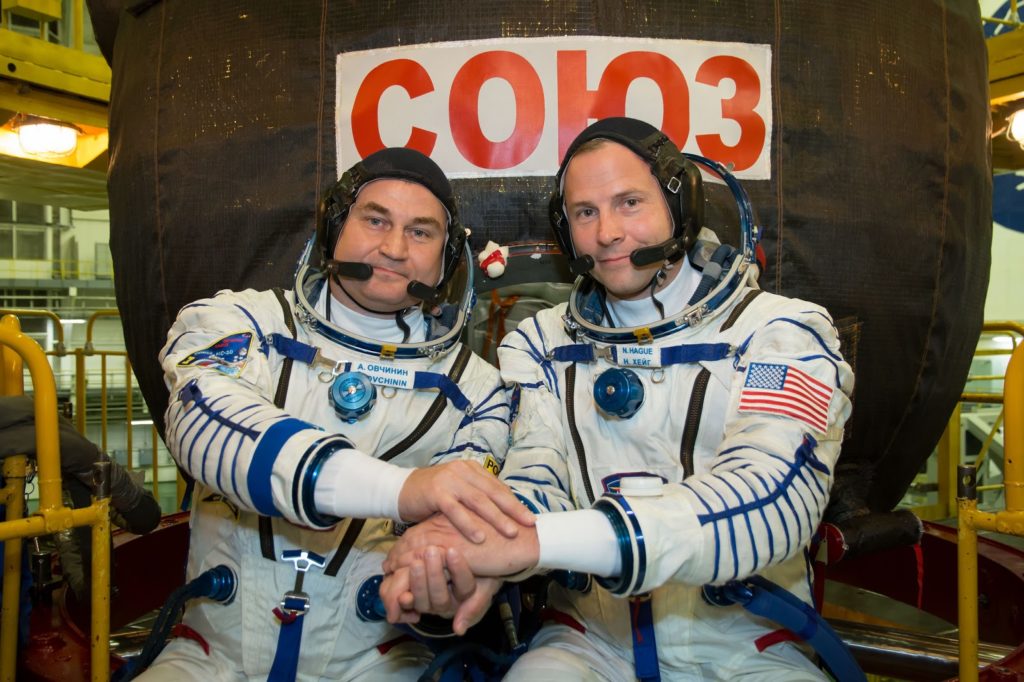 |
|
ISS Expedition 57
crew members Alexey Ovchinin and Nick Hague pose in front of their Soyuz MS-10 spacecraft prior to launch Oct. 11, 2018. Credit: NASA/Victor Zelentsov |
Hague and
Ovchinin soft landed safely after a ballistic descent and in good health back
on Earth about 34 minutes after liftoff.
They flew to about 50 km altitude followed by a
parachute assisted ballistic trajectory touchdown in remote Kazakhstan some 250 miles (400 km) downrange and east of the Baikonur launch
site.
They briefly
experienced G-forces up to about 6 to 7 G’s as well as a few moments of
weightlessness during the initial descent along the ballistic descent
trajectory.
The astronaut, cosmonaut crew are now
safely back home following the Soyuz launch abort just two minutes after
liftoff from the Baikonur Cosmodrome in Kazakhstan,
Oct. 11, at 11:40 a.m. Moscow time, 4:40 a.m. EDT (2:40 p.m. in Baikonur) on a mission scheduled to
deliver them to the International Space Station.
The Soyuz capsule made a ballistic emergency landing in a
remote area in Kazakhstan east of the town of
Dzhezkazgan, a staging area for crews for normal landings located 250
miles (400 km) from the Baikonur launch site.
fast four orbit trip to the ISS to start Expedition 57 and join the crew of
three aboard: Expedition 57 Commander Alexander Gerst of ESA (European Space
Agency), NASA Flight Engineer Serena Auñón-Chancellor and Roscosmos Flight Engineer
Sergey Prokopyev.
reduced Expedition 57 crew of three. Their Soyuz capsule is only validated to
remain in orbit until early January 2019.
with a three person crew comprising Soyuz MS-11
commander Oleg Kononenko, Canadian astronaut David Saint-Jacques and NASA
astronaut Anne McClain.
if all goes well with the resumption of Soyuz rocket launches
Soyuz FG rocket in 35 years when a rocket exploded on the launch pad
at Baikonur in 1983 and the crew escaped via the launch abort rocket on top of
the capsule.
there have been more than 160 unmanned and manned launches of the Soyuz
spacecraft.
Next up for NASA is launch of the Cygnus NG-10
cargo freighter on a Northrop Grumman Antares rocket carrying 3.7 tons of
science and supplies- read our articles about touring Cygnus and Antares.
Watch for Ken’s
continuing onsite coverage of NASA, SpaceX, ULA, Boeing, Lockheed Martin,
Northrop Grumman and more space and mission reports direct from the Kennedy Space
Center, Cape Canaveral Air Force Station, Florida and Wallops Flight Facility,
Virginia.
Stay tuned here for Ken’s continuing Earth and Planetary science
and human spaceflight news: www.kenkremer.com –www.spaceupclose.com –
twitter @ken_kremer – email: ken at kenkremer.com
scientist and journalist based in the KSC area.
Ken’s photos are for sale and he is available for lectures and outreach events
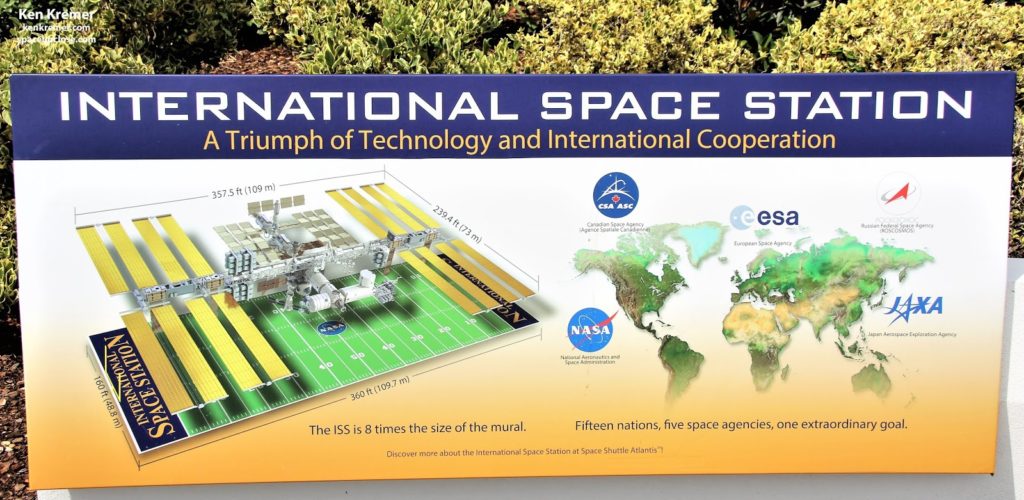 |
| ISS partners graphic. Credit: Ken Kremer/kenkremer.com/spaceupclose.com |


